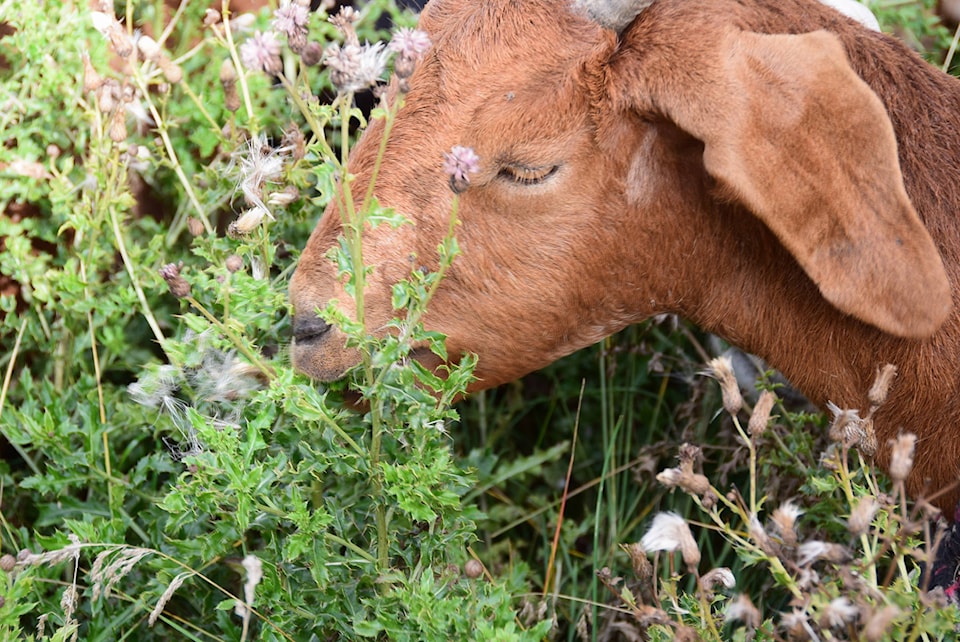Cailey Chase with Vahana Nature Rehabilitation is a big believer in the role of goats in invasive plant management — so much so that she has now acquired her own herd of goats. Chase has worked on other target grazing projects in the last few years in this area, including the goat grazing project on Ktunaxa lands.
She is now looking to be a part of Kimberley’s invasive weed management plan and visited Council on Monday, April 24 to talk to them about what she — and her goats — could offer.
“It’s a partnership,” she said. “The goats take care of excess vegetation and we take care of the goats.”
Chase had some goats in Kimberley last year, grazing invasive weeds on the old Watkins School site and she did some private acreages in Meadowbrook as well. What she is pitching to the city is that right now, every method of invasive plant control is needed and target grazing goats is an effective toolthat can be used in large patches and near water ways.
Chase told Council that 80 goats can eat one to three acres a day.
Goats can be used along waterways, such as Mark Creek, she says, and improve the soil while they are at it. Herbicides kill weeds but also raise the soil’s ph, which invasives like. Goat droppings improve the soil.
“Goats graze when target plants are most vulnerable,” she said. “We circulate goats through the site. When 80 per cent of a plant is removed, it can no longer photosynthesize. These plants will die over the winter and as these larger, older plants die off and the soil improves with the droppings, the native plants can start to fill in”.
Invasive plant control is a long term commitment. Areas have to be retreated the next year and the next, but that is also the case with any other method of weed control.
Chase says that while goats are a proven tool, using only one method has been proven ineffective. She advocates using goats on large patches, using herbicides on what’s already been treated and hand pulling after goats have been through.
“Eventually we would develop a grazing schedule that would migrate the herd through the City twice a year, treating municipal, industrial and residential properties because weeds don’t follow property lines,” she said.
Invasive plants will be here for years to come. Giving up on the treatment of them is not an option, so a sustainable option is needed because we’ve been spraying for over 70 years. Target grzing with goats rpovides an option that can keep knocking the weeds back as well as herbicides can, and cuts back on the toxicity levels inour environments.”
Should the Vahana herd be contracted by the city this year, the target grazing would beginin areas where the public doesn’t generally go so that the herd cn concentrate on the weeds without distraction.
“We would slowly introduce the herd to the public in years to come,” Chase said. “There are economic and health benefits to Kimberley, once the herd has established within the City’s scenery there will be added value to our tourism, lower toxicity levels and it’s funny but, the goas add to the morale of the public. They’re more fun than herbicides!”
The way the herd is managed is key; especially if treating invasive plants that are growing in public areas.
“Education, signs and planning are necessary, but all these efforts are worth it becasue the goats add an intrinsic value to our scenery.”
After presenting to Council, Chase has contacted the City’s Manager of Parks and Facilities and hopes to be able to bid on being a part of the city’s invasive weed management this year.
